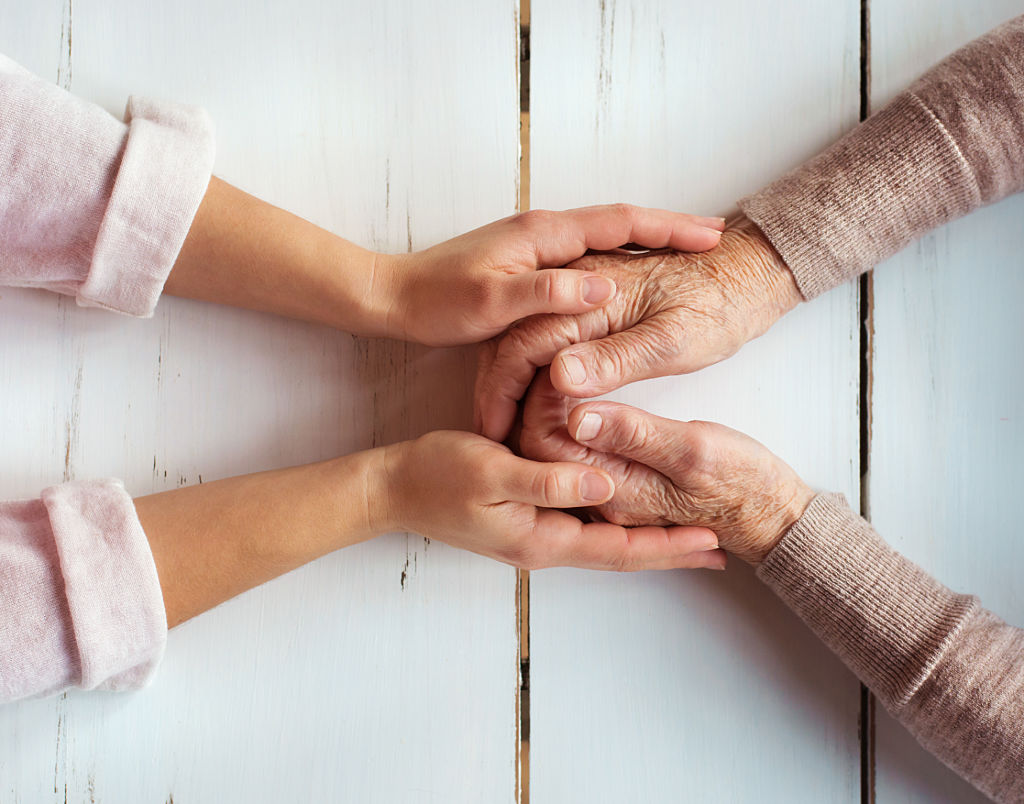Lung Cancer Surgery: Patient Care Resources
WHAT TO KNOW WHEN CONSIDERING LUNG CANCER SURGERY
Where You Are In Your Care
1Getting Started In Your Care
2Getting Your Diagnosis
3Planning Your Treatment
4Undergoing Treatment & Follow-Up
Lung Surgery: Patient Care Resources
Surgery is an effective treatment for lung cancer, especially in the disease’s early stages. Treatment goals for lung cancer surgery are to:
- Eliminate as much of the cancer as possible, by removing either the tumor and its margins (narrow border of surrounding tissue) or the entire lung
- Removal of lymph nodes to check them for cancer
- Relieve symptoms of advanced cancer that has spread (metastasized) to other parts of the body
Surgery is a common treatment for the main types of lung cancer. The type of surgery your team recommends is determined by the size of the tumor and other factors. Your doctor may recommend chemotherapy or radiation therapy before surgery to shrink the tumor so it is easier to remove. Chemotherapy or radiation therapy may also be recommended after lung cancer surgery depending on your cancer stage.
Lung cancer surgeries vary in the amount of lung tissue doctors remove and the parts of the lung they target. The lung is made up of sections called lobes. The right side has 3 lobes and the left side has 2. Subdivisions of lobes are called segments. Different lung lobes have different numbers of segments.
The main types of surgery to remove lung cancer are:
Wedge resection
Doctors typically use wedge resections to treat the smallest tumors, particularly the ones they know are unlikely to spread. This surgery removes the smallest amount of lung tissue is possible to take out with the tumor.
Segmentectomy
In a segmentectomy, your doctor takes out 1 or more segments of a lobe, while still preserving half or more of that lobe. This surgery removes a larger amount of lung than a wedge resection.
Lobectomy
In a lobectomy, your doctor takes out an entire lobe to remove the cancer. At Stanford, about 70% of these surgeries are minimally invasive, which means they only require small incisions. These procedures use techniques called video-assisted thoracic surgery (VATS) or robotic-assisted surgery.
Sleeve lobectomy
In a sleeve lobectomy, doctors take apart the airway and sometimes the main artery in the lung so they can get the tumor out. They then reconnect the lobe, artery, and airway.
Pneumonectomy
Sometimes a tumor’s location makes it impossible to remove the entire tumor with a lobectomy. In that case, doctors perform a pneumonectomy, removing the entire lung on the side of the tumor.
People who have pneumonectomies may experience some shortness of breath after surgery depending on your lung function. Your care team works with you to help you manage this side effect with medicine or techniques such as breathing exercises.
Other surgery for lung cancer
You may need other types of surgery prior to your diagnosis or in addition to your lung cancer surgery.
Biopsy
To confirm a diagnosis, we perform a biopsy to take a small sample of cells from abnormal lung tissue. The types of lung biopsy we use at Stanford include:
- Needle biopsy: Your doctor inserts a very thin needle (fine needle aspiration) or a wider needle (core biopsy) into the lung to remove cells to test for cancer.
- Image-guided lung biopsy: A radiologist uses an imaging technique such as ultrasound or MRI to guide the needle for the biopsy.
- Surgical (or excisional) biopsy: In rare cases, your surgeon may remove all or part of a tumor for testing.
Lymph node surgery
Lymph nodes are small glands that filter bacteria, viruses, cancer cells, and other impurities from the body. If cancer has spread from your lung to any nearby lymph nodes, you may need surgery to remove one or more of them. Depending on your tumor size and location, your surgeon may recommend a separate lymph node surgery.
There are two common ways of sampling lymph nodes for lung cancer:
Mediastinoscopy: involves a small incision at the top of the sternum (breast bone) and placing a lighted telescope to examine lymph nodes in specific areas. This may be scheduled at the same time as your lung operation.
Mediastinal lymph node dissection: involves removal of lymph nodes in the chest done through the same incision(s) as the lung operation.
Either during or after surgery, one of our pathologists examines the lymph node tissues to check for cancer.
Every person is different, so treatments that work for one person may not be right for another.
Health factors influencing treatment options
Your surgeon will help you decide whether surgery may be right for you, based on factors such as:
- Type and stage of cancer
- Your age, overall health, and personal preferences
If you need surgery for lung cancer, our surgical oncology (cancer surgery) team manages your care during this part of your treatment. We work with you to explain our recommendations for your surgical plan to help you decide what’s right for you. We also help you prepare for your surgery and your recovery at home.
You are an important part of the care team, too, so ask us questions and voice your concerns at any point in your treatment. The lung cancer experts on your surgical oncology team include:

Your Doctors
Thoracic Surgeon
Also known as a surgical oncologist, your cancer surgeon specializes in surgical procedures to diagnose and treat cancer. Your surgeon serves as your attending physician, the doctor who directs your care team.
Surgical oncologists perform biopsies (taking tiny samples of tissue) to test for cancer and confirm a diagnosis. They help you choose the best type of surgery for your care. Potential options include traditional (open) approaches or minimally invasive techniques to remove tumors and surrounding tissue.
Anesthesiologist
An anesthesiologist is a doctor who specializes in using medications to block pain during surgery. These medications also help you relax during the procedure or ease you into unconsciousness. After giving medication, your anesthesiologist monitors vital functions such as breathing, blood pressure, and heart rate throughout your surgery and immediate recovery.
Depending on the type of surgery you have, you may need local (small area), regional (larger area), or general (overall) anesthesia. You will meet with your anesthesiologist at your pre-operative visit to review your case in detail.
Pathologist
Working closely with your oncologist, your pathologist performs and reads laboratory tests to determine the type and stage of cancer present. These doctors have special training to detect and diagnose cancer. They use a microscope to examine tissue samples taken during a biopsy. As with radiologists, you may not meet your pathologist while he/she works with your oncologist to diagnose your cancer.

Extended Care Team
This health care provider works with your surgical oncologist to help with diagnosis and treatment. An APP can be a nurse practitioner (NP), physician’s assistant (PA), or clinical nurse specialist (CNS).
Our MCC will call you before your surgery to provide instructions about preparing for the procedure, as well as for your recovery at home. This call will cover:
- What to do in the days before surgery
- How to handle your return home, including arranging for help for the first few days
- Answers to your questions
The CAA helps with administrative issues such as scheduling your appointments, managing your paperwork, and requesting your medical records.
If you need to stay in the hospital after surgery, a registered nurse will take care of you
This team member greets you at the front desk and registers you for your appointments.
A Surgery Scheduler will arrange your pre-surgical appointments with your surgical oncologist. This staff member also schedules your surgeries

Support Services
PATHWELL SUPPORT SERVICES
PathWell is your connection to personalized support services before, during, and after your treatment. Our teams of doctors, nurses, social workers, spiritual care providers, nutrition experts, financial counselors, and more work with your oncology team to provide comprehensive specialized care to you and to your family.
- 650-498-6000 Ask for the PathWell team
Stanford Health Library
For confidential help with your health care questions, contact the Stanford Health Library. Professional medical librarians and trained volunteers, access journals, books, e-books, databases, and videos to learn more about medical conditions, treatment options, and related issues.
- 875 Blake Wilbur, Palo Alto: 1st floor near the cafe, 650-736-1960
- South Bay Cancer Center: 3rd floor lobby, 408-353-0197
- Email us your questions: healthlibrary@stanfordhealthcare.org
At your first appointment, you will need the team who will take care of you throughout your treatment. During this visit, your doctor will discuss your medical history with you in detail.
